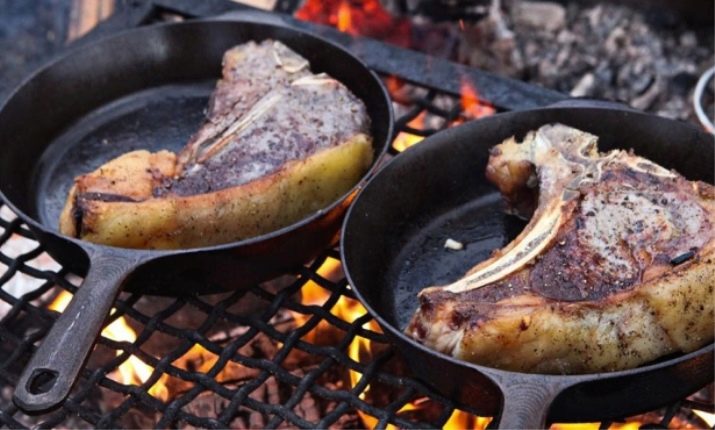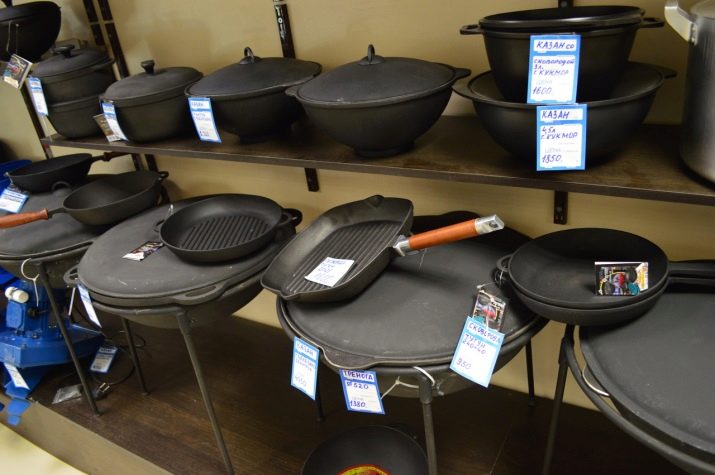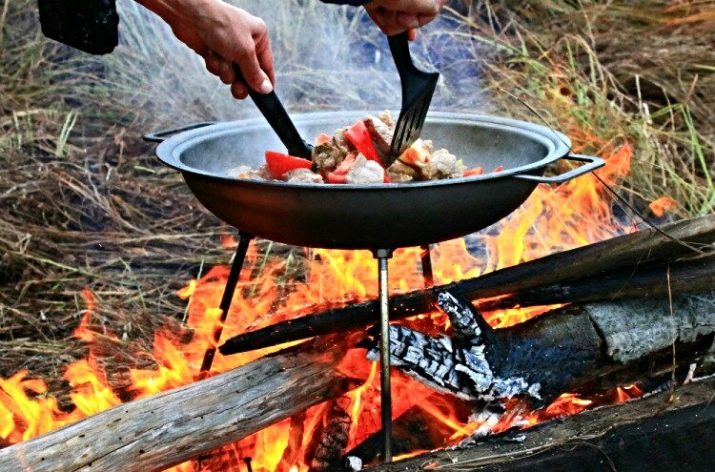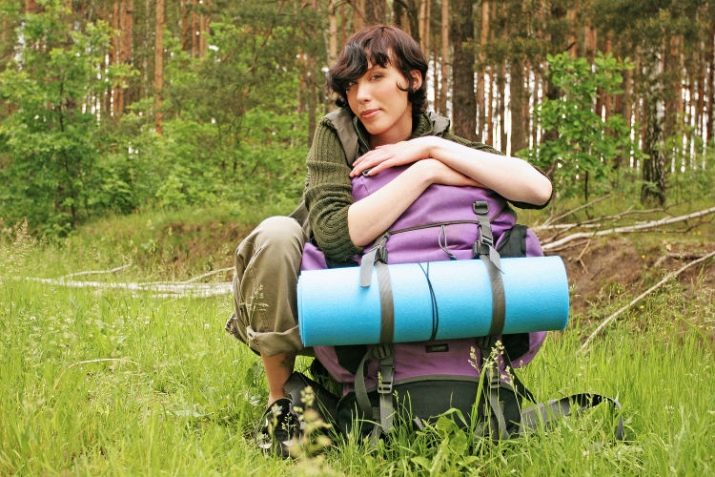Campfire Pan Tips

Food cooked on an open fire acquires a special taste. The meat gets incredibly juicy, the vegetables get more flavor, and the potatoes get crispy and golden... Choosing the right pan is important to avoid fire cooking failures, and this task may not be as easy as it seems at first glance.

Types of fire utensils
There are the following types of pans that can be used for cooking over an open fire.
Universal round. This model is suitable for frying, and for stewing, as well as for sautéing vegetables.

- Brazier. Round cookware with two handles, most suitable for baking food.

- Deep frying pan. It often resembles a camping pot and, depending on the depth, you can even cook soup in it. This is true for those who love fishing and recreation near the water.

- Tajine. Deep round or oval frying pan with a high, elongated lid. It simultaneously evenly heats the contents and processes them with steam. The option is not camping, but rather a country one, when on an open fire you need to cook a portion of a dish for a large number of guests.

- Tapa. This frying pan comes from Georgia, it has a square shape and a press lid. It cooks any meat and vegetables.


Frying pans also vary in size. There are three types:
- small frying pan, whose diameter is less than 35.5 cm;
- medium size - from 35.5 to 40 cm in circumference;
- large dishes - from 40 centimeters or more.


Frying pans differ not only in shape and depth, but also in material. The two main types used for open fires are cast iron pans and steel pans. Each type has its own advantages and disadvantages.
Cast iron
First, let's talk about the cast iron version, for which the following positive characteristics can be listed:
- the ability to retain heat for a long time, since in nature, where the wind blows, everything cools down much faster;
- food in such dishes is heated evenly, does not burn and leaves no chance for unroasted or unbaked areas;
- a cast iron pan does not rust, which means that it will last you a very long time;
- cast iron coating does not react with food and does not oxidize, which has a beneficial effect on the quality of cooked dishes.

Unfortunately, a cast iron pan for a fire also has properties with a minus sign.
- The weight. If you are not traveling by car, but using bikes or doing it on foot, the weight of your luggage will matter. Cast iron cookware is massive and not very convenient for transportation.
- Initially uncomfortable handle. Often cast iron pans are made without them. This is due to the fact that the alloy of the pan is one-piece, and the handle heats up at the same time as the rest of the surface. Taking a hot pan off the fire will not be so easy. If you purchase a separate wooden handle in advance, the task will be greatly simplified.


Remember one rule - the more such dishes weigh, the better it is.If you understand that a flat frying pan will be enough for you to travel, take it with low sides or without them, but the pan bowl should be thick.
It is best to take dishes with a lid, which should not be cast iron. Here you can save the total weight of your equipment and take a glass lid that fits the size. Pay attention to coverage. The bottom should be flat, without flaws. If you see a bumpy surface or cracks, then this product is defective and you should not take it.

Steel
Now consider a camping steel frying pan, why is it good.
- She is lighter. Not only flat small models are convenient, but even pans with a thick bottom and high sides.
- The material is also resistant to rust and oxidation. Exceptions are cases where the surface has been damaged.
- When the surface is heated, no harmful substances are released, and the food does not acquire specific odors.
- An important point for a good hostess is appearance. Shiny almost mirror surfaces look spectacular, they are very pleasant to cook in.


The number of disadvantages of stainless steel is not so numerous. They mainly concern the external component. When cooking on a campfire, the outside of the pan may become covered with dark spots from burning. It is recommended to clean them only with soft creamy products, without abrasives in the composition, otherwise the dishes will lose that very attractive sheen.

How to choose?
The process of cooking on a fire can be conditionally divided into two options: camping or tourist and home (dacha). For obvious reasons, the choice of dishes, depending on the location of cooking, will be different. When camping, it is better to take small dishes with you in order to prepare portions of fresh food and not leave surpluses, which, most likely, will have nowhere to store. If you have a large company, it is better to cook food twice than to take large boilers with you. Moreover, the rest by the fire often stretches for several hours, and you will still spend time there.
Keep in mind that the weight of the pan will add to the overall weight of your luggage. Calculate your strength correctly.

If you are having a barbecue in your country house or country cottage, the choice of dishes will be dictated more by the number of people for whom you set the table. It can be a large dish or a small frying pan. If no more than 3 people gather at the table, then small dishes will be enough for you. The average size of the pan will allow you to cook 4-5 servings. Well, large volumes are intended for noisy and crowded evenings.
Follow the rules for handling hot objects, and do not forget about protective gloves and hot coasters. And when working with an open fire, be on the lookout and always keep water or sand on hand, which in an emergency can put out a spreading fire.

How to choose the right pan, see the following video.




























